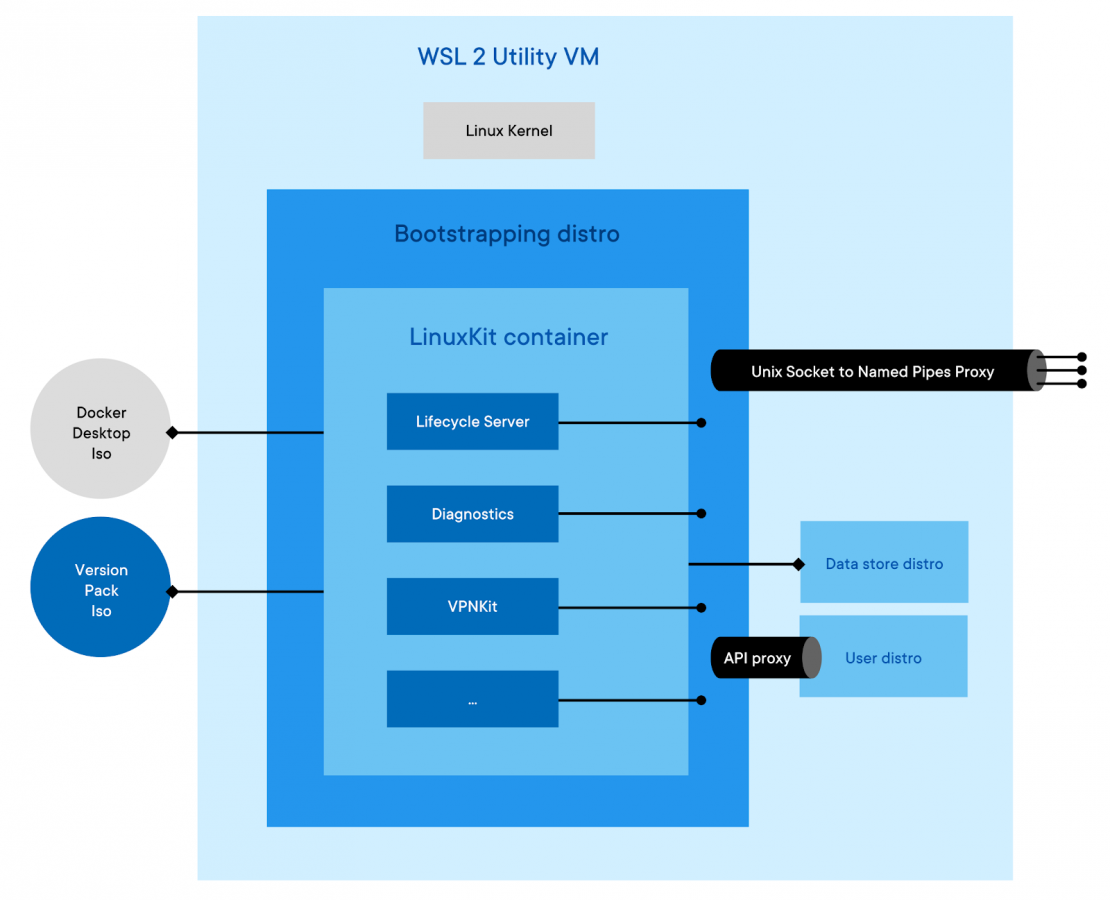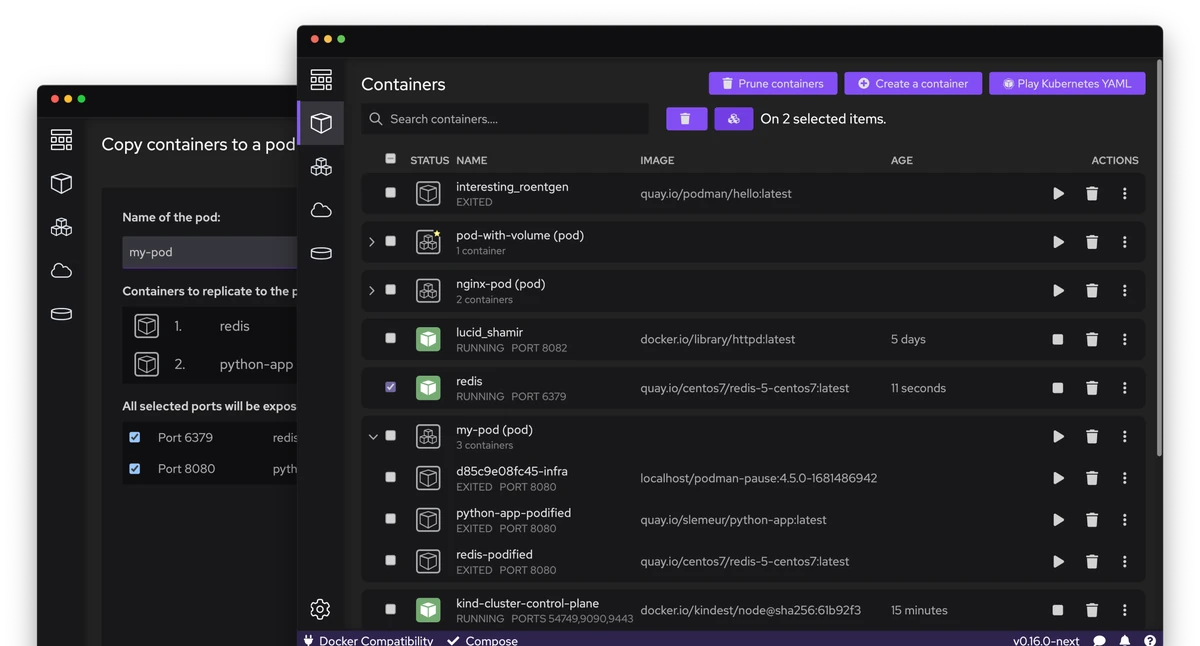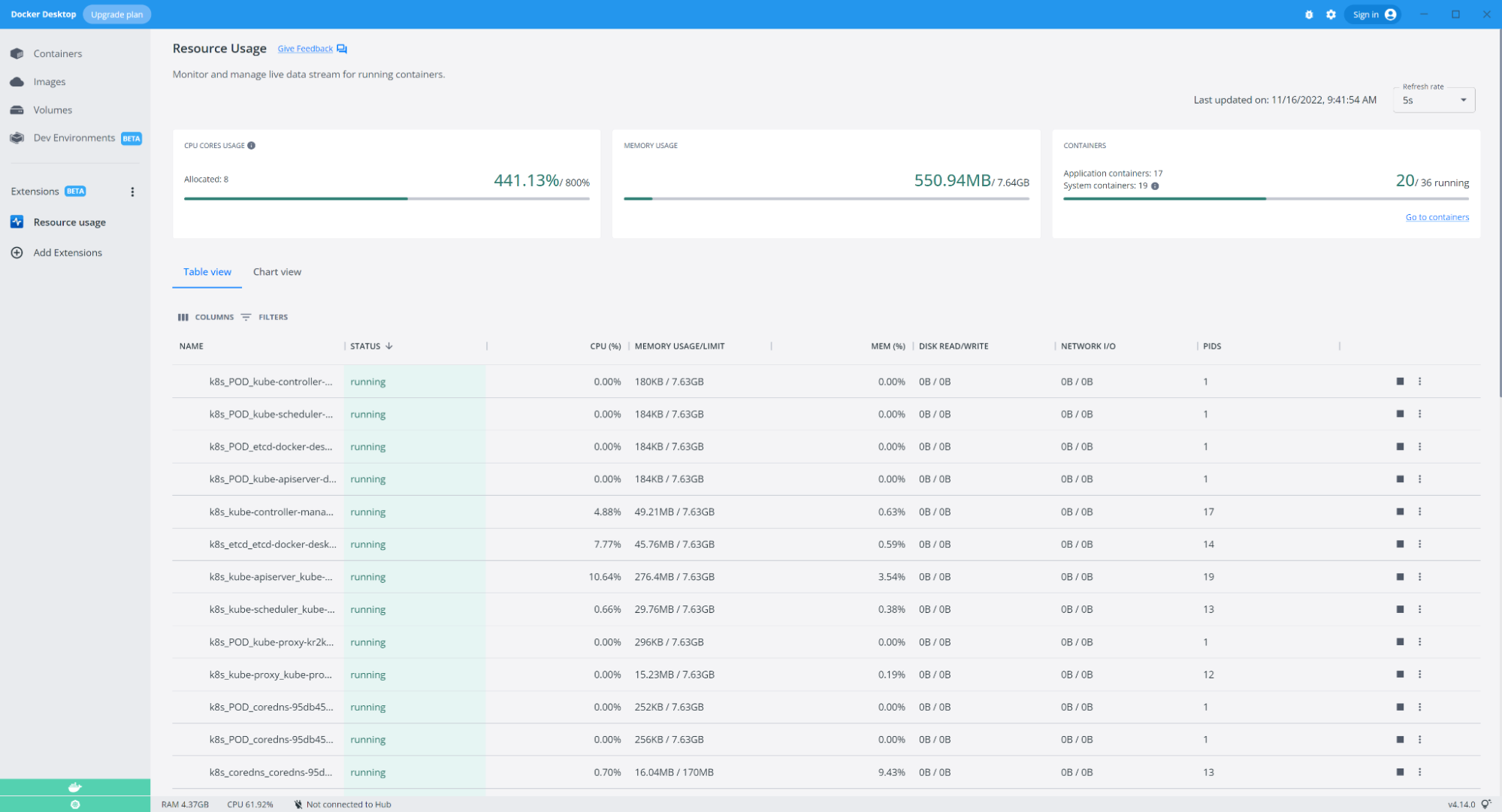What Docker Desktop Actually Is
Docker Desktop is Docker's official GUI wrapper around Docker Engine. If you've used Docker CLI, Docker Desktop gives you the same thing but with a point-and-click interface and some extra features.
Released in 2018, Docker Desktop was free and became the go-to way to run Docker on Mac and Windows. Then Docker decided they needed revenue and started charging companies $9/month per seat in 2024. Cue the mass exodus to Podman.

Why Docker Desktop Exists (And Why You Might Hate It)
Windows and macOS can't run containers natively because they're not Linux. Docker Desktop fixes this by running a Linux VM in the background. Simple concept, but the execution can be... frustrating.
Cross-Platform VM Bullshit: On Windows, Docker Desktop uses WSL 2 or Hyper-V to run Linux containers. On macOS, it spins up a custom Linux VM. This works fine until Windows updates break WSL2 integration, or your Mac fans start sounding like a jet engine because Docker allocated 8GB of RAM to the VM.

Point-and-Click Container Management: The GUI shows your containers, logs, and resource usage without typing docker ps every five minutes. Great for beginners or when you need to show non-technical folks what's running. Less great when the GUI freezes and you have to kill Docker Desktop.
Everything In One Package: Includes Docker Compose, Docker Build Cloud integration, and Docker Scout security scanning. Convenient until you realize half these features require paid plans.

The Pricing Disaster That Ruined Everything
Docker completely fucked their pricing model back in 2021 (remember when it was actually free?) and then made it worse in 2024. What used to be free for everyone now costs money if your company has more than 250 employees:
- Docker Personal: Free (for now) if your company makes less than $10M/year
- Docker Pro: $9/month per user (was $5/month, they doubled it)
- Docker Team: $15/month per user (was $9/month)
- Docker Business: $24/month per user
Companies with over 250 employees or $10M revenue now have to pay. This pissed off a lot of developers who woke up to license violation emails. Half the dev community immediately started looking at Podman Desktop and Rancher Desktop as free alternatives.
What's Actually New in Docker Desktop 4.45 (Current Version)
Docker Desktop 4.45.0 dropped on August 28, 2025 and it's the current stable version. Here's what actually changed instead of the marketing bullshit:
Docker Model Runner Goes GA: Docker Model Runner is now "generally available" which means they finally think it won't crash your laptop. You can now run AI models locally instead of paying OpenAI $20/month. Works great until you try to load a 7B model and your 8GB MacBook starts crying.
Faster Release Schedule: Docker's now shipping updates every two weeks instead of whenever they feel like it. They're aiming for weekly releases by the end of 2025, which means weekly opportunities for them to break something that was working fine.
Security Updates: Fixed a bunch of networking bugs that were breaking container communication - the kind of shit that works fine in dev but explodes in production when you have actual traffic.
The Usual Docker Desktop Bullshit
Every Docker Desktop release is a gamble. Sometimes it works fine, sometimes it decides to eat your laptop's RAM for breakfast and ask for seconds.
The classic issues that keep showing up:
- Networking randomly shits the bed: Your containers talk to each other fine for weeks, then one random Tuesday morning nothing can connect. Restart Docker Desktop, problem solved for another month.
- RAM consumption from hell: The
com.docker.backendprocess is like a digital cancer - starts at 2GB and just keeps growing. I've seen it hit 12GB while running a single fucking nginx container. - "Docker Desktop is starting..." purgatory: Sometimes it just sits there spinning for 10 minutes then gives up with no error message. Restart your machine, cross your fingers, sacrifice a goat to the container gods.
I wait at least two weeks after any Docker Desktop update before installing it. Golden rule: Never, EVER update Docker Desktop on Friday unless you enjoy debugging container networking at 2am while your weekend plans die.
The Enterprise Features That Matter
Docker Desktop's paid tiers include capabilities that become essential for team development, assuming your IT department doesn't completely lose their shit over security compliance:
Single Sign-On (SSO): IT loses their shit if you don't have SSO for every tool. Docker Desktop integrates with Okta, Azure AD, and whatever other overpriced identity provider your company bought from some sales guy who took your CTO to dinner.
Image Access Management: Administrators can control which container registries developers can access. Translation: IT gets to block Docker Hub because some security consultant scared them with supply chain attack stories.
Registry Access Management: Teams can restrict pulls to approved registries, preventing developers from pulling that sketchy cryptocurrency miner image from Docker Hub that your intern found on Reddit.
Vulnerability Scanning: Docker Scout will find 847 CVEs in your npm dependencies, 99% of which are in packages you've never heard of that some library depends on. Perfect for security theater - your CISO gets a nice report showing "we scan for vulnerabilities" while you ignore every alert because fixing them would mean rewriting half your app.
Centralized Management: IT teams can push Docker Desktop updates that break your dev environment right before your sprint demo. Includes MSI packages and Group Policy templates that work 80% of the time.
Docker Desktop Alternatives (Because Fuck Paying $9/Month)
After Docker's licensing shitshow, developers started fleeing to alternatives. Here's the honest breakdown:


**Podman Desktop**: Free Docker Desktop clone that mostly works. The GUI is basic as hell and you'll spend 2 hours figuring out why rootless containers won't bind to port 80. But it's free and runs your containers.
**Rancher Desktop**: Free and focuses on Kubernetes. Uses containerd instead of Docker Engine, which means some Docker Compose files break in weird ways. Great if you live in K8s land, annoying if you just want to run containers.
**OrbStack**: Mac-only alternative that's actually faster than Docker Desktop and uses half the RAM. Costs $8/month but worth it if you value your laptop not sounding like a helicopter. Only works on macOS though.
**Colima**: Command-line alternative for macOS that's completely free. No GUI, pure terminal. Lightweight as fuck but you'll miss the convenience of clicking buttons.
Bottom line: Docker Desktop is still the most polished option, but paying $9/month per developer adds up fast. If your company has budget and you value convenience over principles, stick with Docker Desktop. If you're pissed about the pricing or just want to save money, Podman Desktop or OrbStack are solid alternatives that won't make you want to throw your laptop out the window.



